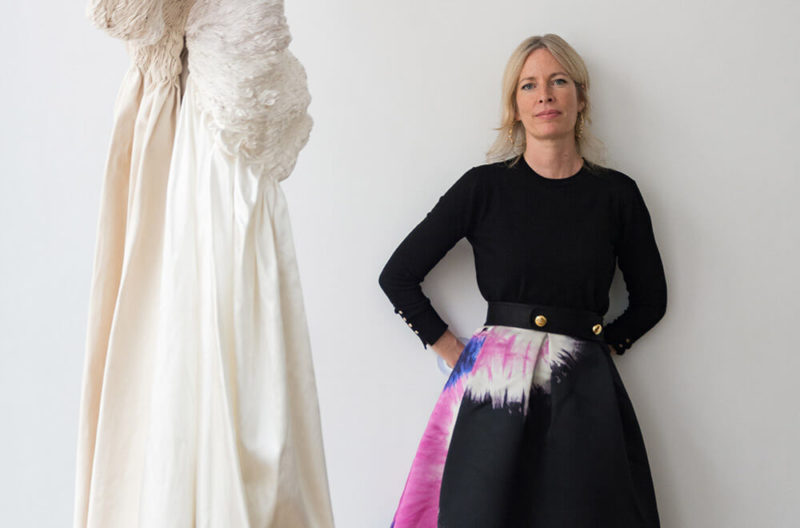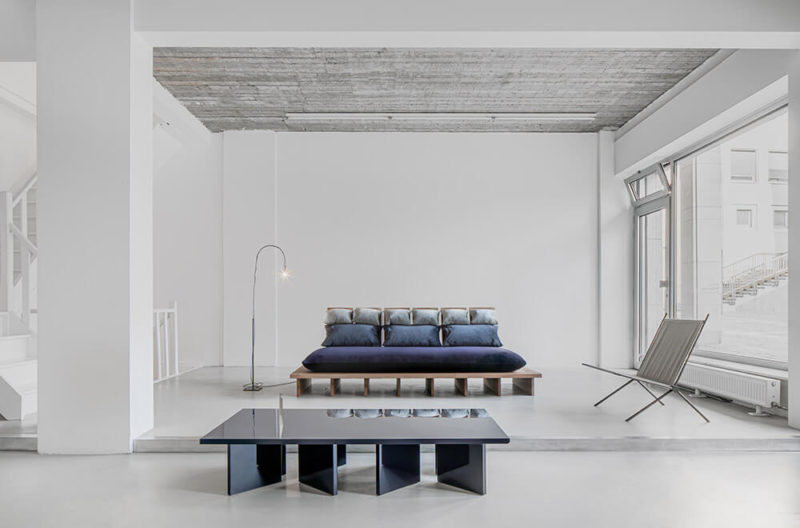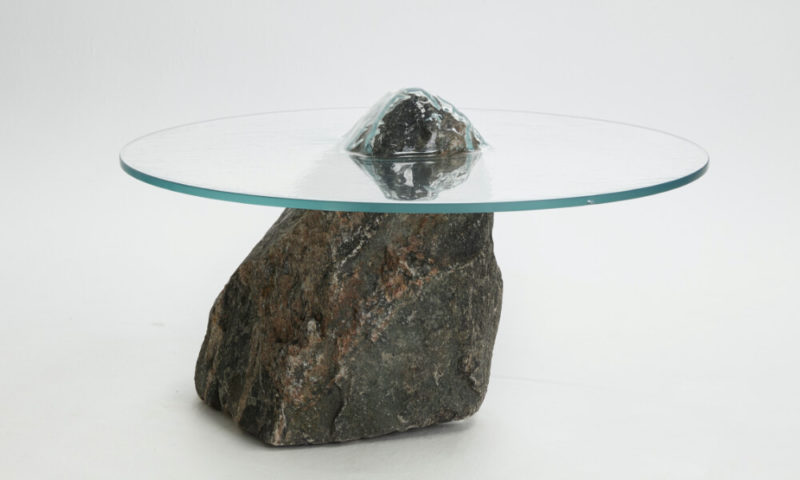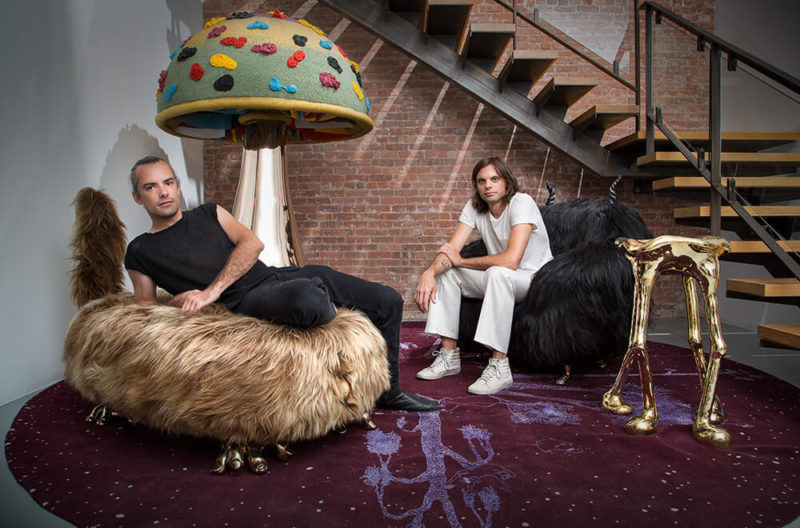Xavier Franquesa: Il•lacions
Interior designer turned gallerist, Franquesa's new space provides a platform for the best of Barcelona's collectible designers.
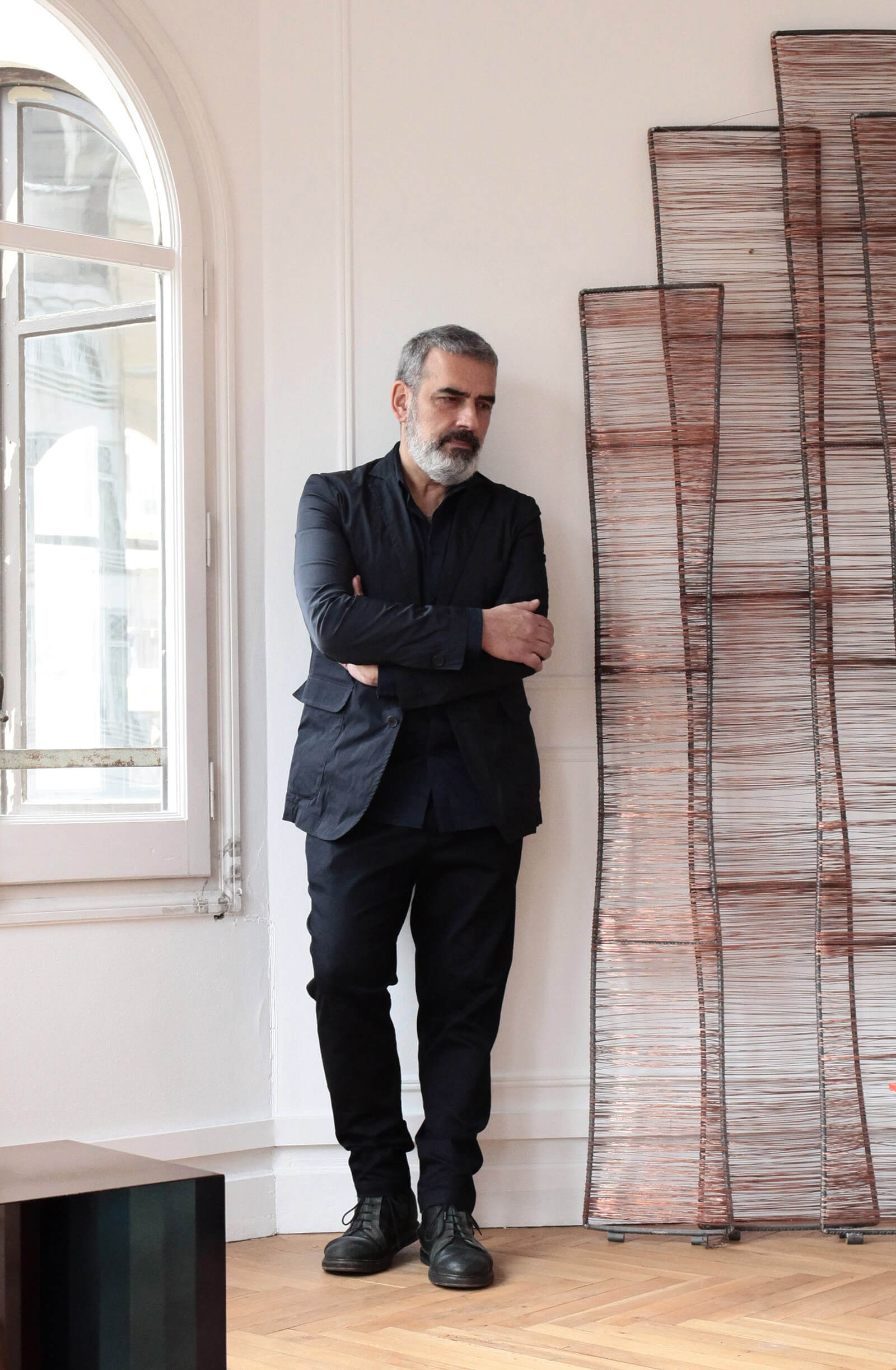
Xavier Franquesa, founder/director of Il·lacions design gallery in Barcelona.
COURTESY: Il·lacions
XAVIER FRANQUESA IS a multi-disciplinary gallerist and a passionate proponent of collectible contemporary design in Barcelona. After forging a career as an interior designer, he founded his gallery, Il.lacions, in 2011. This September he opened a new seven-room gallery in an apartment located in Barcelona’s Eixample district, home to Antoni Gaudí’s Casa Milà masterpiece. Il.lacions is a pun on the Catalan word “ilación”, meaning inference, connection or relationship. The name refers to how Franquesa, 55, is committed to converging disciplines, cementing relationships within Barcelona’s design community and building the international reputation of his stable of 23 designers.
The Design Edit (TDE): Could you tell us a bit about your background, why you started Il.lacions and how you found your new gallery space?
Xavier Franquesa: I’m an interior designer and I’ve worked for 35 years on hundreds of projects that involved furniture, art and creative direction. So over the years I’ve met and collaborated with many designers. When I started Il•lacions in 2011, it was a combination of a studio, a gallery and a place for design meetings. The first iteration ended in 2014. Then it resumed in 2018 in the form of ‘pop-ups’ in temporary locations and design fairs. Over the last two years, we’ve assembled more than 20 designers from Barcelona and a large number of pieces and projects. We were lucky to find this apartment through a friend in real estate, whose company owns the building. He offered the choice of three apartments because he has fewer corporate tenants than before.
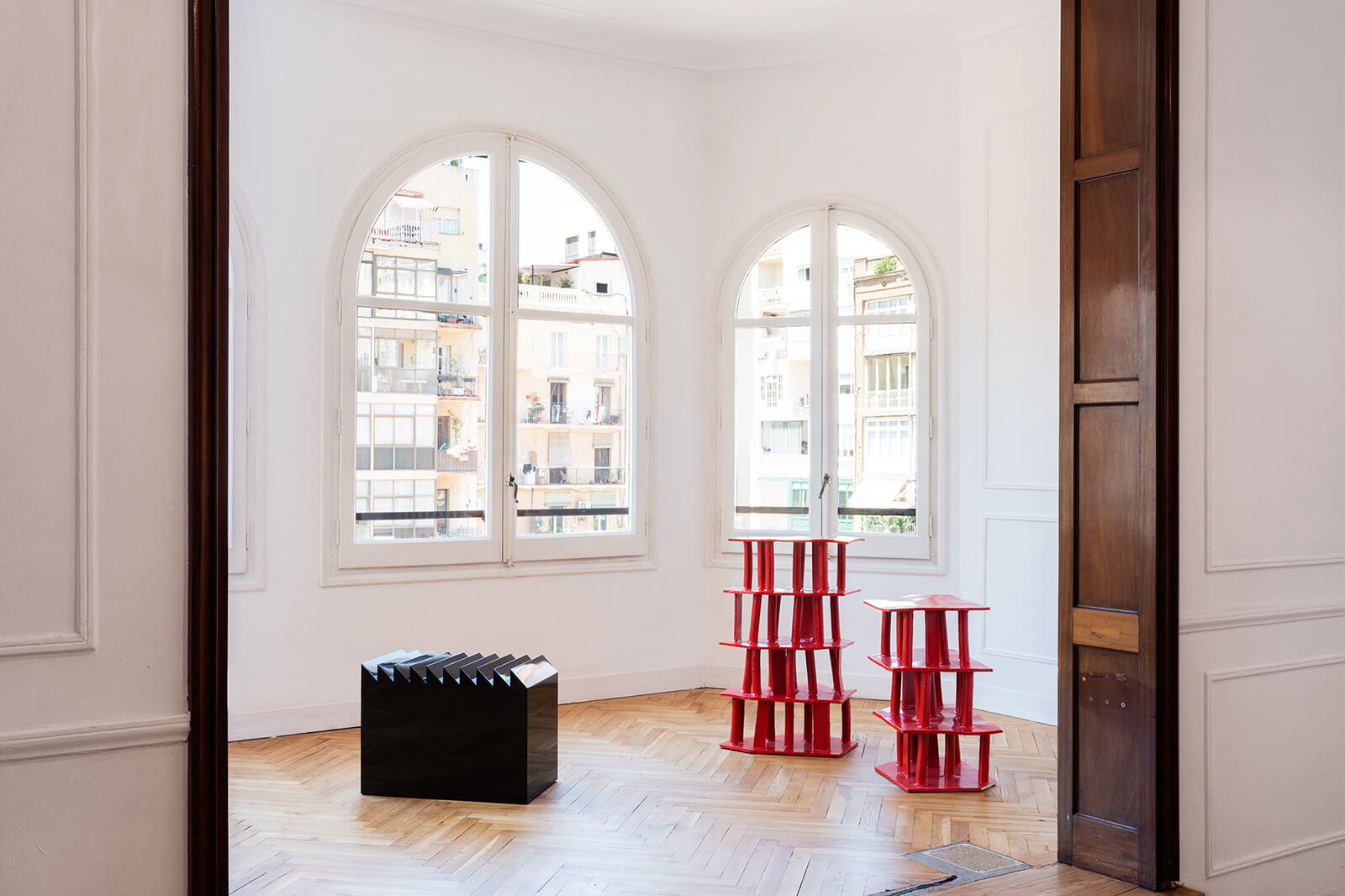
Installation view, Max Enrich ‘Sierra’, 2019 and Roger Coll-Krasznai, ‘Big Happy Collapse, 2020
COURTESY: Il·lacions / PHOTOGRAPH: Mertixell Arjalaguer
TDE: What are the pros and cons of having a gallery in an apartment?
Xavier Franquesa: The advantage is the proportion of the space, which is like a home – it enables clients to see all the objects in a domestic environment. This is more beneficial for creating an understanding of the furniture and lamps, than a large white box. Every room is a surprise. We have objects in the kitchen, the hall, a square room whose format resembles an art gallery, a cabinet of curiosities and a fantastic 70-metres-squared main room. People unexpectedly discover this main exhibition room at the end of their visit. The disadvantage is that we can’t exhibit Miquel Subiràs’s large pieces made from steel plates as they’re too big and heavy for the scale of the apartment.

Miquel Subiràs, ‘Double Desk 302.2’, 2019
COURTESY: Il·lacions and Miquel Subiràs / PHOTOGRAPH: Pep Sau
TDE: How difficult has it been to open the gallery during the pandemic?
Xavier Franquesa: We had to cancel our inauguration three times because of the initial outbreak of the virus and later spikes in infections. The first opening was planned for March and then the lockdown was declared. The second was planned for July but restrictions were reinstated. And the third was planned for September but couldn’t happen either. We had to totally change our communication and marketing strategy and so we opened unofficially with visits for only two or three people at a time. We’d like to have a proper inauguration before Barcelona Design Week [17th – 26th November] so we can present this exhibition – the first in this new space – during that week.
TDE: What can you tell us about some of the pieces in this exhibition?
Xavier Franquesa: In the main room, we’re showing ‘Mimesis’ by Jordi Ribaudí – a collection of furniture sculptures made from buffalo leather and Finnish pine that speaks about the environmental issue of destroying trees and the planet. In the square room, we’re presenting Turbina Studio’s stone timepieces, ‘Pendulum Clock’ and ‘Disc Clock’. For Barcelona Design Week, we’ll also be showing a round table with a collection of 40 handmade ceramic pieces by the illustrator Meritxell Duran: bowls, tureens and vases with faces on them that bring happiness wherever they go.
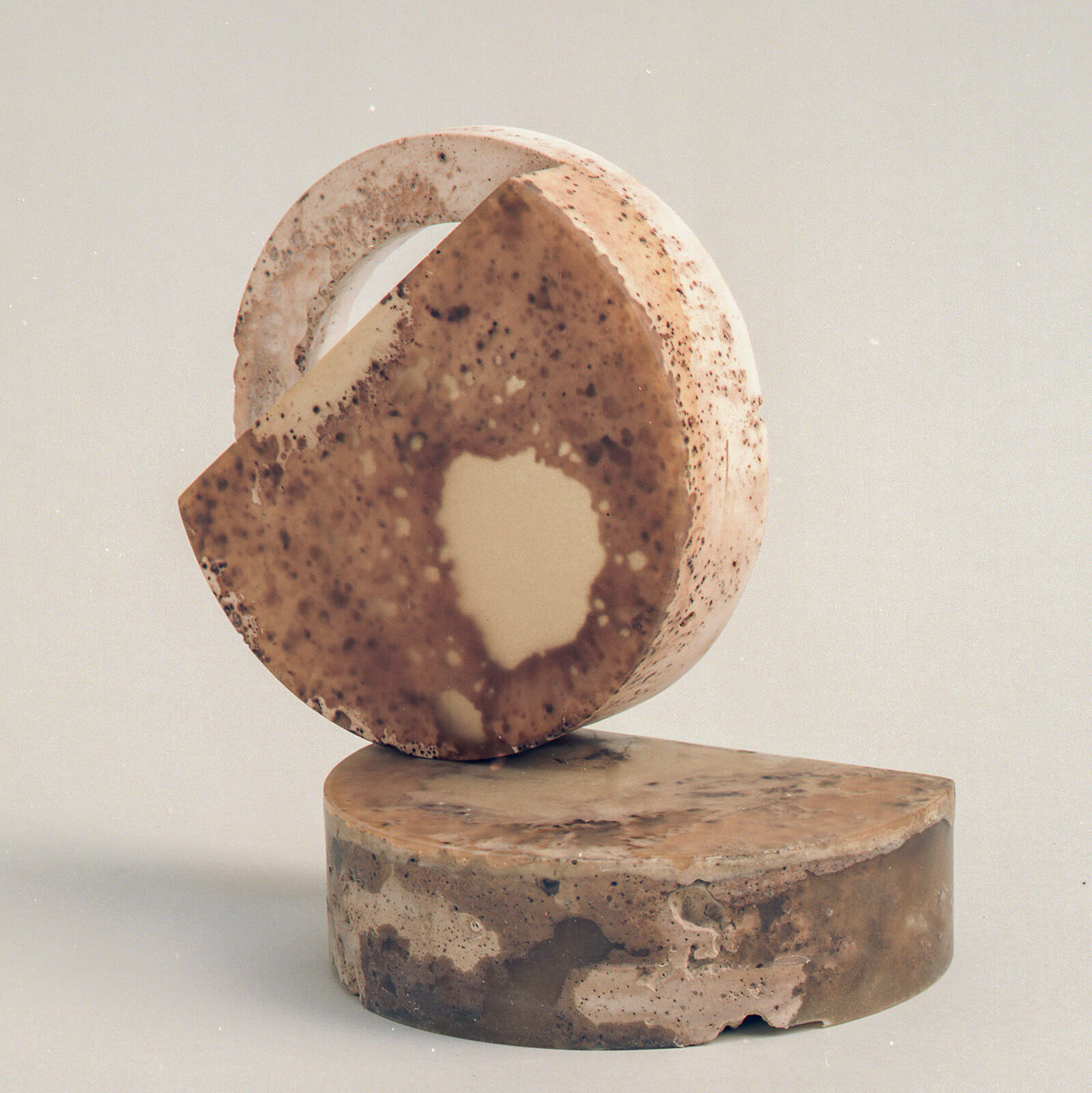
Turbina Studio, ‘Disc Clock’, 2019
COURTESY: Il·lacions and Turbina
TDE: What are the particular characteristics of Catalan design?
Xavier Franquesa: Catalan design was born out of Art Nouveau and Catalan architects – such as Antoni Gaudí, Josep Puig i Cadafalch and Lluís Domènech i Montaner – wanting to bring industry and craftsmanship to architecture. Later, modernist architects also incorporated design into their projects. Generally speaking, design made in Barcelona is sober, sophisticated in terms of ideas and utility, and made with high-quality materials. It’s never about fantasy or being extraordinary or extravagant. Catalans dislike showing off. Our DNA is elegant but discreet – it’s not about driving a Rolls Royce or wearing Fendi. Maybe some Catalans have a Rolls Royce in a garage somewhere but nobody knows about it. All the objects and furniture from Barcelona reflect this feeling.
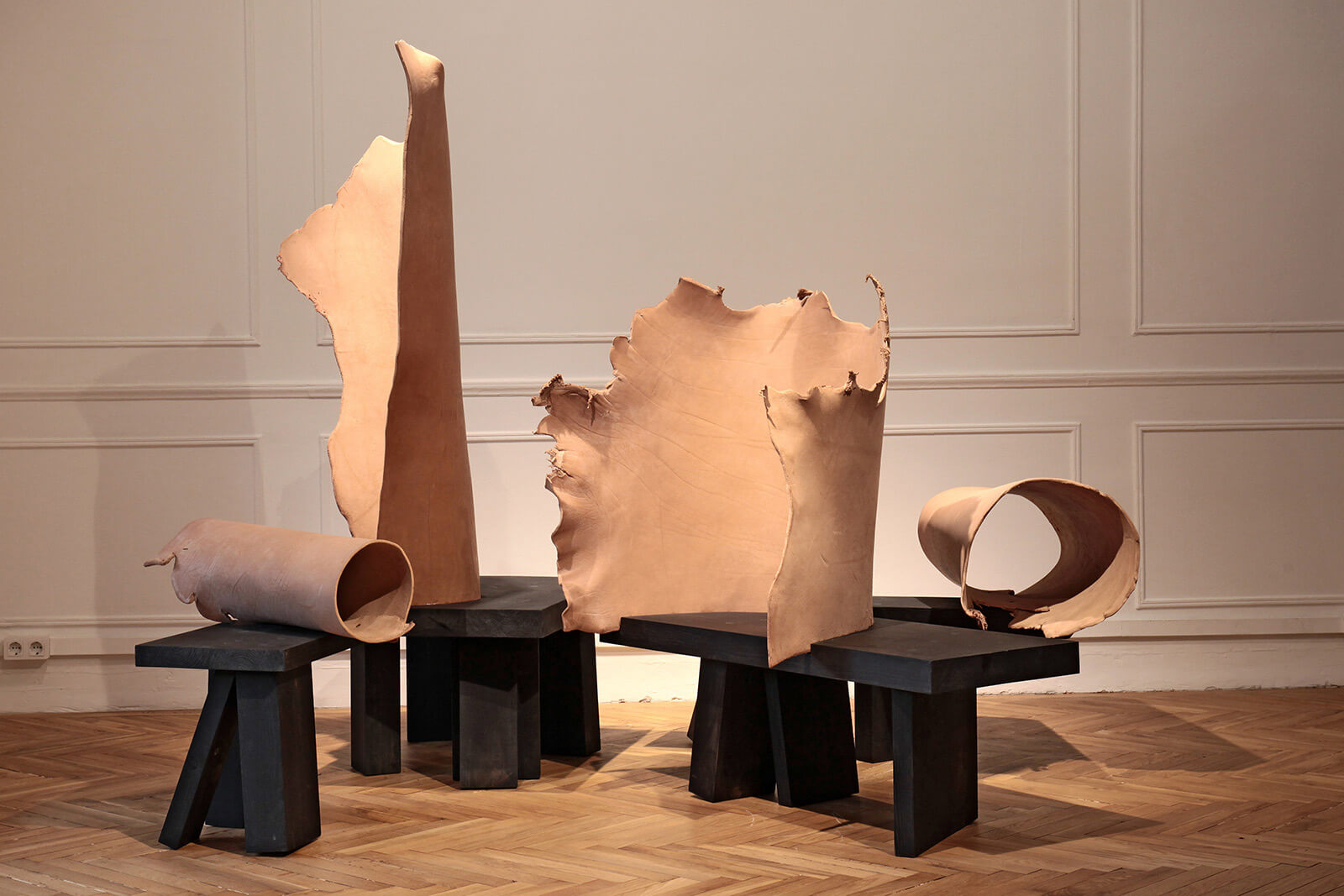
Jordi Ribaudí, ‘Mimesis’, 2020
COURTESY: Il·lacions and Jordi Ribaudi / PHOTOGRAPH: Carles Roig
TDE: How do you decide which designers to work with?
Xavier Franquesa: The works that I represent usually have functionality, poetry and a strong concept. As a creative director, I’m involved in a lot of projects where every piece matches with the rest and follows the same script. I don’t have to reflect deeply about whether a designer fits my gallery – it’s something instantaneous, which is the idiosyncratic thread that ties everything together. This comes from having spent over 20 years honing my taste and instincts. Gradually, you find your way.
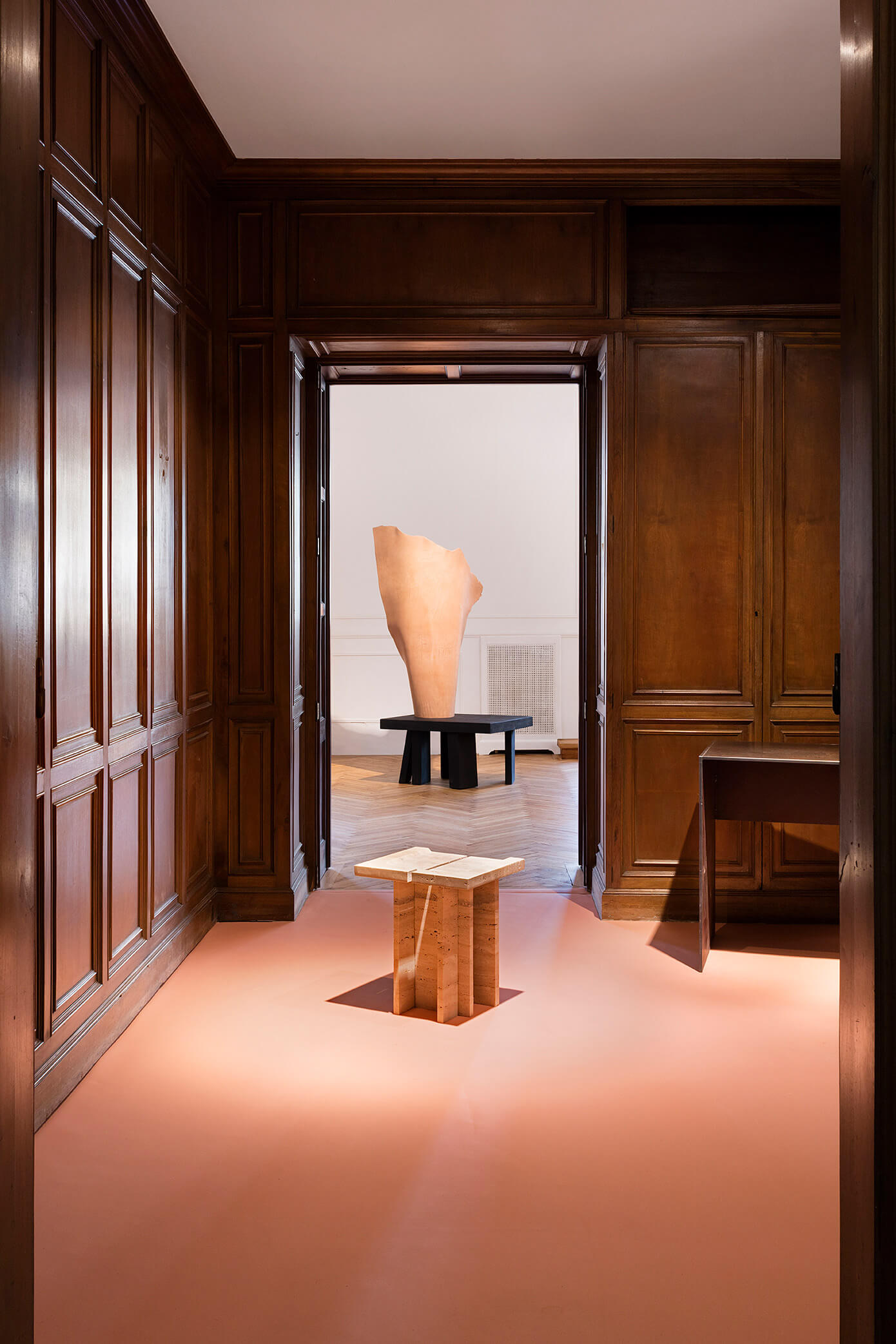
Installation view, Sanna Völker, ‘Kahn Stool’, 2019 (foreground) and Jordi Ribaudí, ‘Mimesis’, 2020 (background)
COURTESY: Il·lacions / PHOTOGRAPH: Mertixell Arjalaguer
“Catalan design was born out of Art Nouveau and Catalan architects wanting to bring industry and craftsmanship to architecture”
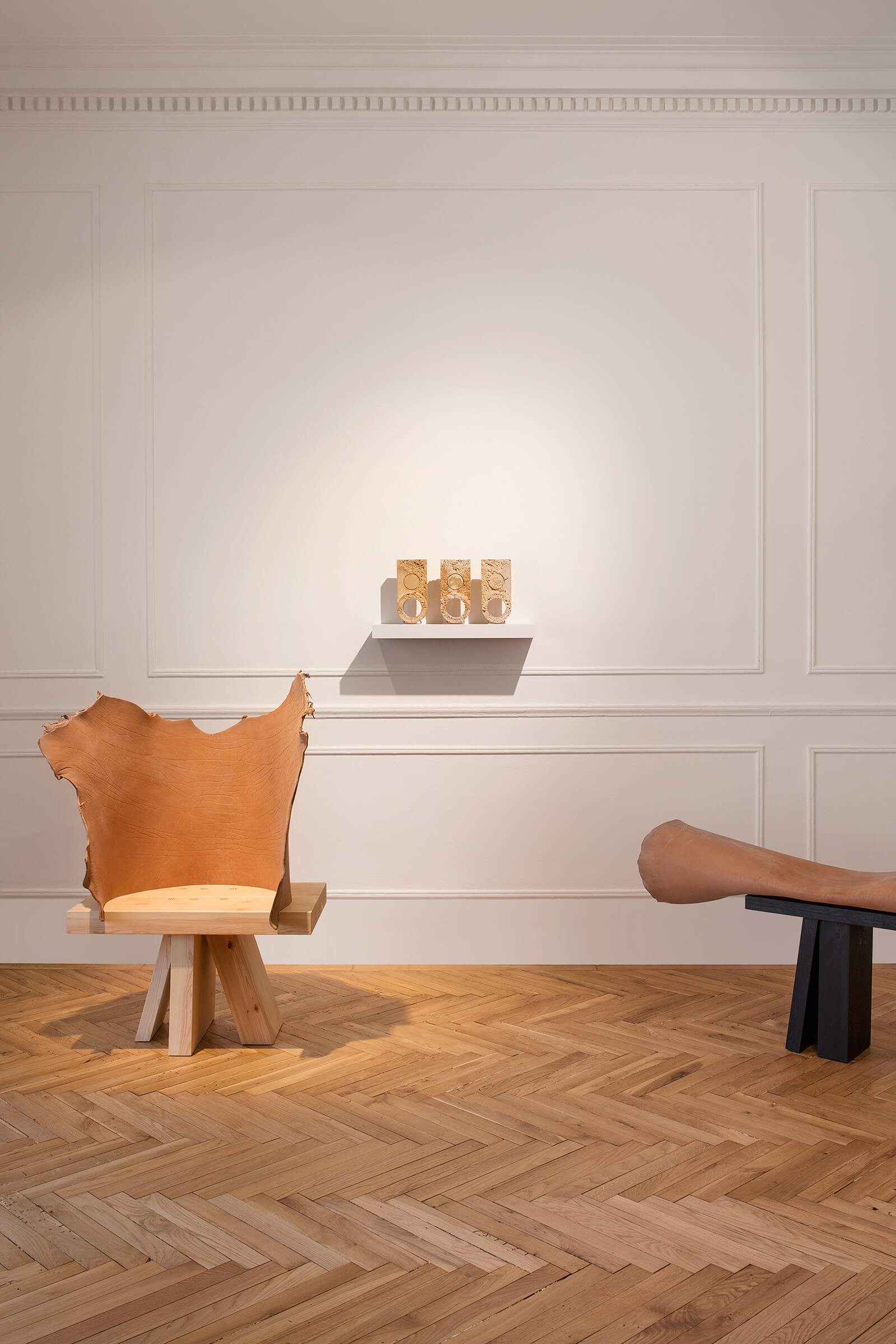
Installation view, Jordi Ribaudí, ‘Mimesis’, 2020 (foreground) and Turbina Studio, ‘Disc Clock’, 2019 (centre)
COURTESY: Il·lacions / PHOTOGRAPH: Mertixell Arjalaguer
“Design made in Barcelona is sober, sophisticated in terms of ideas and utility, and made with high-quality materials”
TDE: Can you tell us about some of your designers?
Xavier Franquesa: The first designer we showed is Miquel Subiràs. He used to work for RCR Arquitectes (winner of the Pritzker Prize in 2017). His steel-plated pieces are about minimal simplicity with strong lines, such as a desk made from only five plates. Antoni Arola, who is the best lighting designer in Spain, creates lighting installations and lamps. Sanna Völker lives between Sweden, where she’s a product designer, and Barcelona, where she makes smaller, more intimate pieces by reusing materials. She’s recently made a stool with local stonemasons with the travertine remnants of an angel from Gaudí’s Sagrada Familia.

Sanna Völker, ‘Kahn Stool’, 2019
COURTESY: Sanna Völker
Alejandra Perini is from Colombia and moved here after her studies at ECAL in Lausanne. Her ‘Cétoine’ stool, which she designed with Kiwibravo, is amazing in how it changes colour, from orange to violet, green and blue, as you walk around it. And Max Enrich is well-known internationally for making challenging, conceptual designs that play with forms, like a three-legged side-table that makes you wonder how it remains standing.

Alejandra Perini, ‘Cétoine’ stool, 2017
COURTESY: Alejandra Perini / PHOTOGRAPH: Andrea Ferrara
TDE: What level of support do you have from foundations and institutions?
Xavier Franquesa: We sometimes collaborate with the Barcelona Design Centre. We would like to have a greater connection with the Design Museum of Barcelona, which is sadly more focused on Art Nouveau than contemporary design. And the Barcelona City Council has asked us to become advisors on its creative industries department. Institutional support is moving ahead slowly. If one approaches Spanish and Catalan institutions to talk about design, most of them orient you towards their industry department. When you say, “No, we’re not industry; we’re culture,” they reply, “Oh, sorry, design is not in our culture portfolio.”
TDE: What is Barcelona’s design scene and collecting scene like?
Xavier Franquesa: There are thousands of designers and more than ten schools – so you can imagine how many diplomas are awarded every year. There are several other galleries such as Room Service, which is focused on bringing Dutch design to Barcelona, and Galeria H2O which exhibits a mixture of art, architecture and design. But since the 1990s, we’ve lost a generation of people interested in collecting art and design. While their parents were fans of design in the glory days around the 1992 Olympic Games, the next generation seems to prefer spending money on food, travelling or property development. So it’s a tough situation because we have to create a new community of collectors.
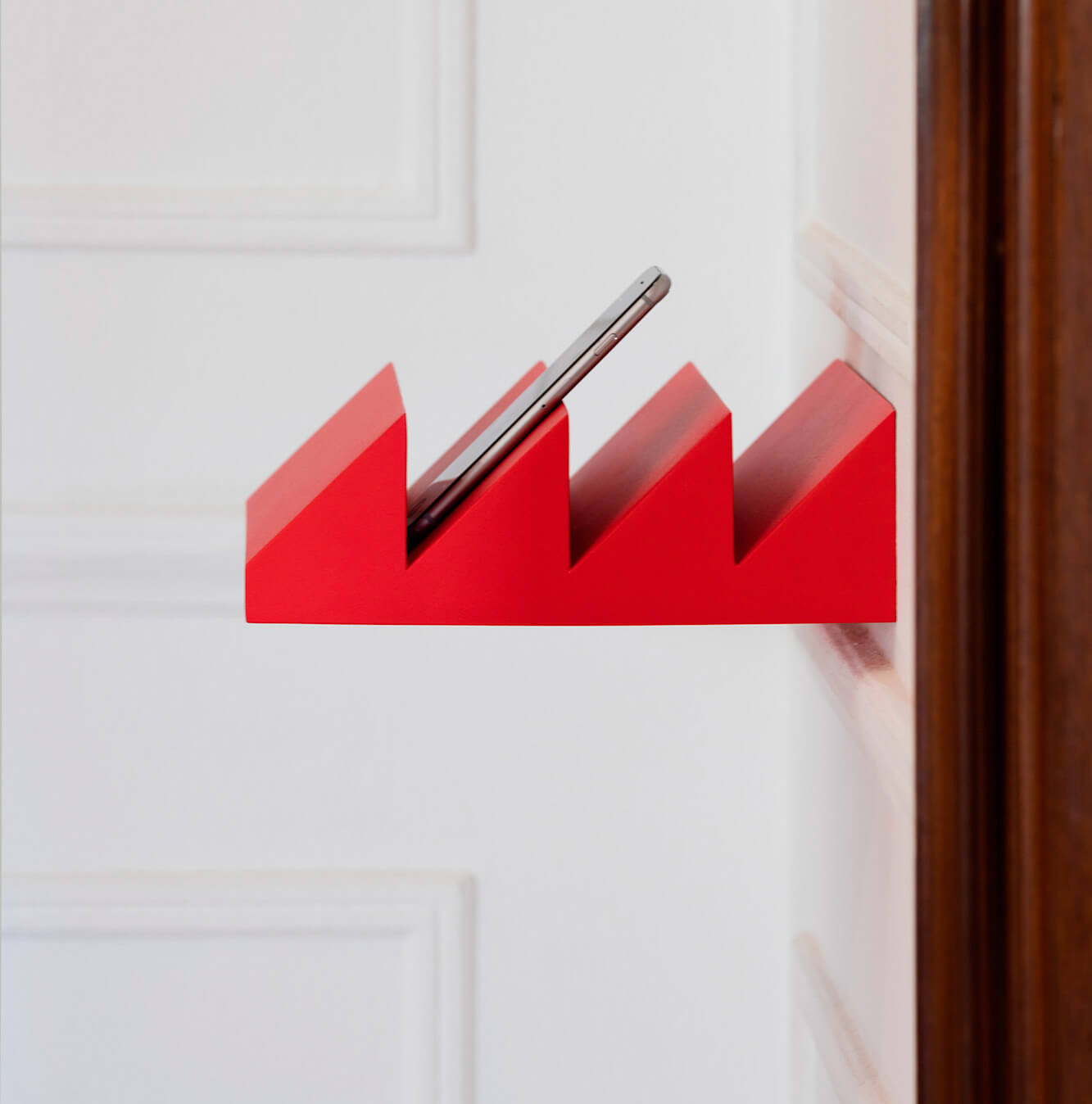
Max Enrich, ‘Zig Zag’, 2020
COURTESY: Il·lacions / PHOTOGRAPH: Mertixell Arjalaguer
TDE: How are you stimulating the upcoming generation’s interest in
collectible design?
Xavier Franquesa: The first step is to let them know that good design exists in Barcelona. They don’t need to go to Italy or England to buy furniture because we have designers making pieces here that are just as good and that are more closely related to their particular tastes. They can understand a piece better and feel more comfortable with it than something made in Japan or Austria. The second step is to tell them that we’re building a legacy for the future. People might have an armchair from the 1960s or a lamp from the 1970s and believe that this represents the design of our era. This isn’t true. They ought to have pieces from today otherwise the legacy of the current generation of designers will be irredeemably lost.
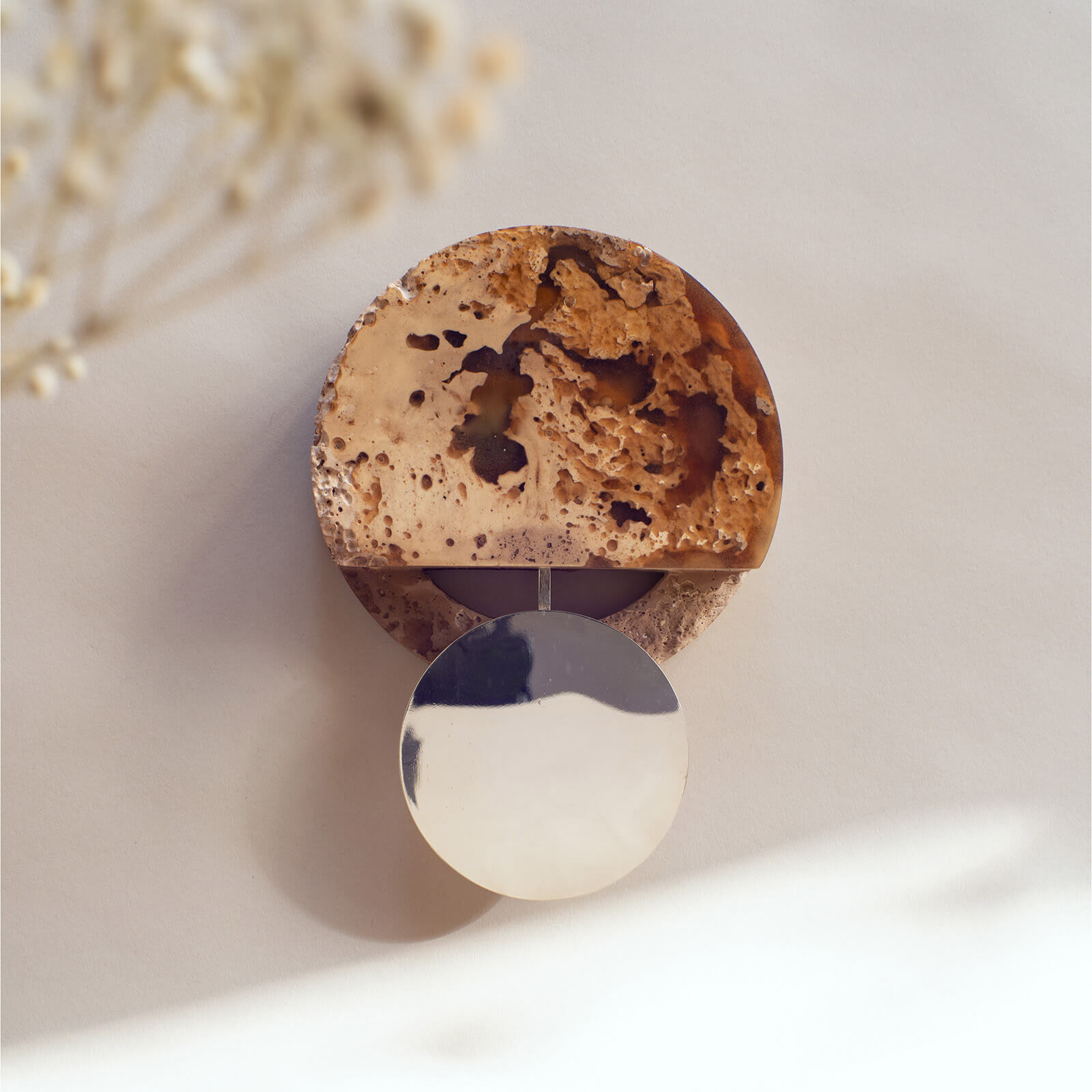
Turbina Studio, ‘Pendulum Clock’,2019
COURTESY: Il·lacions and Turbina
TDE: What is the philosophy of your gallery?
Xavier Franquesa: We’d like to provide a platform for promoting the future legacy of Barcelona design on a global scale. All these creative minds need to have a space to show what they’re making and we love having the combined intelligence of these designers concentrated in our gallery.
Il•lacions – a space that represents the creative drive of Barcelona, the courage to advance and expand the territory of design.




